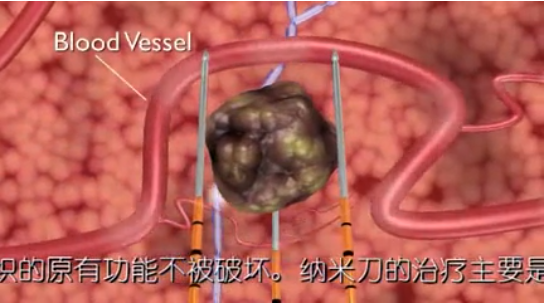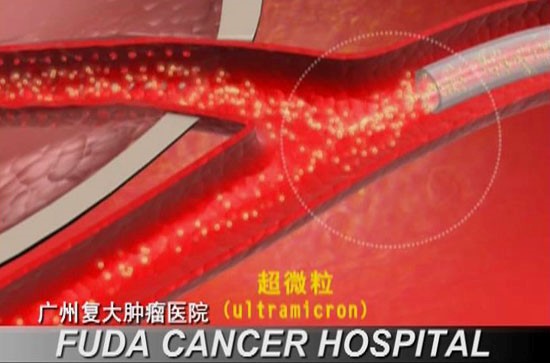Can advanced liver cancer be treated? Many people believe that cancer is an incurable disease. Especially when it comes to a person suffering from liver cancer, he must be said to be incurable because he is terminally ill. For the patients themselves, they often become pessimistic and desperate because they know it is liver cancer, especially in the late stage. Thereupon, they give up treatment, just waiting for death to come.
Treatment as Early as Possible can Prolong Survival
As a malignant tumor, liver cancer has a great chance of being cured or survival can be prolonged if it is discovered early and treated in time. According to the stage and 5-year survival rate of liver cancer, the 5-year survival rate of early primary liver cancer is 31%. The 5-year survival rate of locally invasive and lymph node metastatic liver cancer is 11% and distal metastatic liver cancer is 3% (data from Internet). The earlier liver cancer is treated, the more likely it is to be cured.
Treatments for Liver Cancer
Surgical resection: big trauma and high risk
Chemotherapy and electrotherapy: They are often accompanied by side effects, such as alopecia, nausea, vomiting, constipation, diarrhea, etc. The overall outcome of chemotherapy is unsatisfying. Only about 7% of the patients can be relieved, and another 15% can achieve a longer expected survival time than those who did not receive chemotherapy. Moreover, this prolongation does not mean the cancer could be cured. Does not even mean the restoration of quality of life.
“CCC+P” treatment mode could effectively increase survival rate and improve life quality
“CCC+P” treatment mode is the achievement presented by Guangzhou Fuda Cancer hospital Research Institute and Guangzhou Cancer Cryoablation Research Institute. It combines the advantages and functions of the main clinical diagnosis and treatment technologies, and comprehensively utilizes internationally accredited latest such as Cryosurgical Ablation (CSA), Cancer Vascular Intervention Therapy (CVI), and combined immunotherapy (CIC). Give from local to whole body treatment according to different situation. It is a better choice for patients with tumors that are unresectable, metastatic, recurrent or/and unresponsive to radiotherapy and chemotherapy.
Cryosurgical Ablation (CSA)

Unlike other ablation methods, cryotherapy not only ablates tumor tissue in situ but also stimulates systemic anti-tumor immunity to eliminate residual or metastatic lesions, thereby reducing or preventing recurrence.
Cryosurgical ablation can prolong the survival time of patients with liver cancer. Zhou Xinda et al [2] reported that survival rates of 1 year, 3 years, and 5 years in 235 patients with hepatocellular carcinoma who have received intraoperative cryosurgery are 78.4%, 54.1%, and 39.8% respectively, which is higher than that of patients who underwent surgical resection alone. The survival rate of primary or secondary liver cancer patients treated mainly with percutaneous cryotherapy is much higher than that of patients who received general chemotherapy [3-6].
Irreversible Electroporation (IRE)

NanoKnife ablation can more precisely induce apoptosis of tumor cells and cause complete ablation of tumors without irreversible damage to other important tissues in the ablation area, such as blood vessels, bile ducts, nerves, etc., thereby reducing the complications associated with other traditional methods of ablation.
Cancer Vascular Intervention (CVI)

Drug microspheres will be injected into the tumor, and the microspheres will selectively penetrate into the tumor tissue and maintain a high concentration for a long time. The drug carrier microspheres sent to the tumor target by the drug delivery catheter and deposited in the tumor tissue can kill tumor cells by releasing the drug, so as to achieve the purpose of treating tumors. At the same time, the blood supply to the tumor tissue is blocked, and the blood supply to the tumor is reduced. Radiation therapy is carried out through drug microspheres, and radiation therapy can also kill tumor cells.
Combination of Immuno-chemotherapy (CIC)

CIC therapy can not only inhibit the growth of primary tumors but also prevent tumor recurrence and metastasis. It is the last choice for the treatment of advanced tumors and refractory metastatic tumors. It is also the first choice for the comprehensive treatment of cancer patients.
Personalization is Key
“CCC+P” treatment mode insists that treatment should be individualized. According to different patients’ different conditions, doctors will give different treatment plans, including the sequence of treatment and the combination of therapies. In the case of preserving the primary liver and lung functions and other important organs' functions, doctors will take minimally invasive therapy as the first priority to ensure the least damage to the patient's body.
The New Hope and Tumor Therapy: CCC+P
“CCC+P” treatment mode integrates the advantages and functions of the main clinical diagnosis and treatment technologies, and comprehensively uses the internationally accredited latest technologies such as Cryosurgical Ablation (CSA), Cancer Vascular Intervention Therapy (CVI), and combined immunotherapy (CIC), etc. Give from local to whole body treatment according to different situations. It is a better choice for patients with tumors that are unresectable, metastatic, recurrent or/and unresponsive to radiotherapy and chemotherapy.
Do you have any specific questions or need more information on this topic?
Best Cancer Hospitals and Treatment - Comprehensive Information
When it comes to cancer treatment, the choice of hospital can make a significant difference in patient outcomes. India has rapidly become a global hub for advanced cancer care, offering a combination of cutting-edge technology, world-class medical expertise, and affordable treatment options. Below is a detailed guide to some of the best cancer hospitals in India, along with an overview of the cancer treatments available.
Why Choose India for Cancer Treatment?
India's cancer hospitals offer a blend of modern medical infrastructure, highly skilled oncologists, and affordable treatment plans. Patients from across the globe travel to India for cancer care due to the high success rates, availability of advanced technologies like robotic surgery, proton therapy, and personalized treatment plans. Learn more about why India is a top choice for cancer treatment.
Best Cancer Hospitals in India
If you're searching for the Best Cancer Hospitals in India, you're in the right place. India is home to some of the leading oncology hospitals in India, offering cutting-edge cancer treatments. These top cancer treatment centers in India are known for their advanced technologies and world-class care. Learn more about the best cancer hospitals in India for detailed information.
Best Oncologists in India
India has some of the best oncologists in India with expertise across different types of cancer. When you're looking for the top cancer specialists in India, you can rely on these leading cancer doctors in India to provide the best possible care. Visit the best oncologists in India page to find more about the top cancer specialists in India and their qualifications.
Best Cancer Treatments in India
India offers a wide variety of cancer treatments including surgery, chemotherapy, radiation therapy, and immunotherapy. Hospitals are equipped with modern technologies such as CyberKnife, TrueBeam, and Da Vinci Surgical Systems. Learn more about the advanced cancer treatments in India available at top hospitals.
Best Liver Cancer Treatment in India
Looking for the best liver cancer treatment in India? India offers top-tier medical facilities, and some of the best liver cancer hospitals in India are known for their high success rates and innovative treatments. Visit the best liver cancer treatment in India to explore options at advanced liver cancer care in India.
Best Oral Cancer Treatment in India
When searching for the best oral cancer treatment in India, it's important to choose a facility with a proven track record. The top oral cancer hospitals in India offer world-class care and innovative treatments. Learn more about the best oral cancer specialists in India who are experts in treating all stages of oral cancer.
Best Breast Cancer Treatment in India
For the best breast cancer treatment in India, look no further than India's top oncology hospitals. These facilities offer the leading breast cancer specialists in India and the most advanced treatment options. Discover more about the top breast cancer hospitals in India where patients receive comprehensive care.
Best Pancreatic Cancer Treatment in India
The best pancreatic cancer treatment in India is available at India's top cancer centers. These hospitals provide state-of-the-art treatments for pancreatic cancer. Visit the top pancreatic cancer hospitals in India to learn more about the care offered by the best pancreatic cancer specialists in India.
Best Stomach Cancer Treatment in India
If you're looking for the best stomach cancer treatment in India, the top hospitals in the country offer cutting-edge treatments. Learn more about the top stomach cancer specialists in India and discover the facilities offering leading stomach cancer care in India.
Best Colon Cancer Treatment in India
For the best colon cancer treatment in India, India's leading hospitals provide top-quality care. Visit the top colon cancer hospitals in India and explore the treatment options offered by the best colon cancer specialists in India.
Best Prostate Cancer Treatment in India
If you're seeking the best prostate cancer treatment in India, several top hospitals offer advanced care. Visit the leading prostate cancer specialists in India to learn more about the most effective treatments. These top prostate cancer hospitals in India provide innovative solutions for prostate cancer care.
Best Lung Cancer Treatment in India
India is home to some of the best lung cancer treatment centers offering comprehensive care. The top lung cancer hospitals in India provide cutting-edge therapies for lung cancer patients. Learn more about the best lung cancer specialists in India for detailed information on available treatments.
Best Cervical Cancer Treatment in India
Finding the best cervical cancer treatment in India is crucial for successful recovery. The top cervical cancer hospitals in India offer advanced treatment options and world-class care. Visit the best cervical cancer specialists in India to explore more.
Best Bone Cancer Treatment in India
The best bone cancer treatment in India is provided by some of the nation's top hospitals. Learn more about the leading bone cancer specialists in India and the facilities offering top bone cancer care in India to ensure the best possible treatment outcomes.
Holistic Cancer Care in India
India's top cancer hospitals not only focus on clinical treatments but also offer holistic care, including nutrition, mental health support, and rehabilitation services. Learn about the holistic cancer care in India provided by leading hospitals to support recovery.
Global Patients and Medical Tourism for Cancer Treatment
India has seen a surge in global patients seeking cancer treatment due to its affordable pricing, high-quality care, and no waitlist policies. The medical tourism for cancer treatment is well-established, with top hospitals offering personalized services for international patients, including accommodation, visa assistance, and follow-up care.